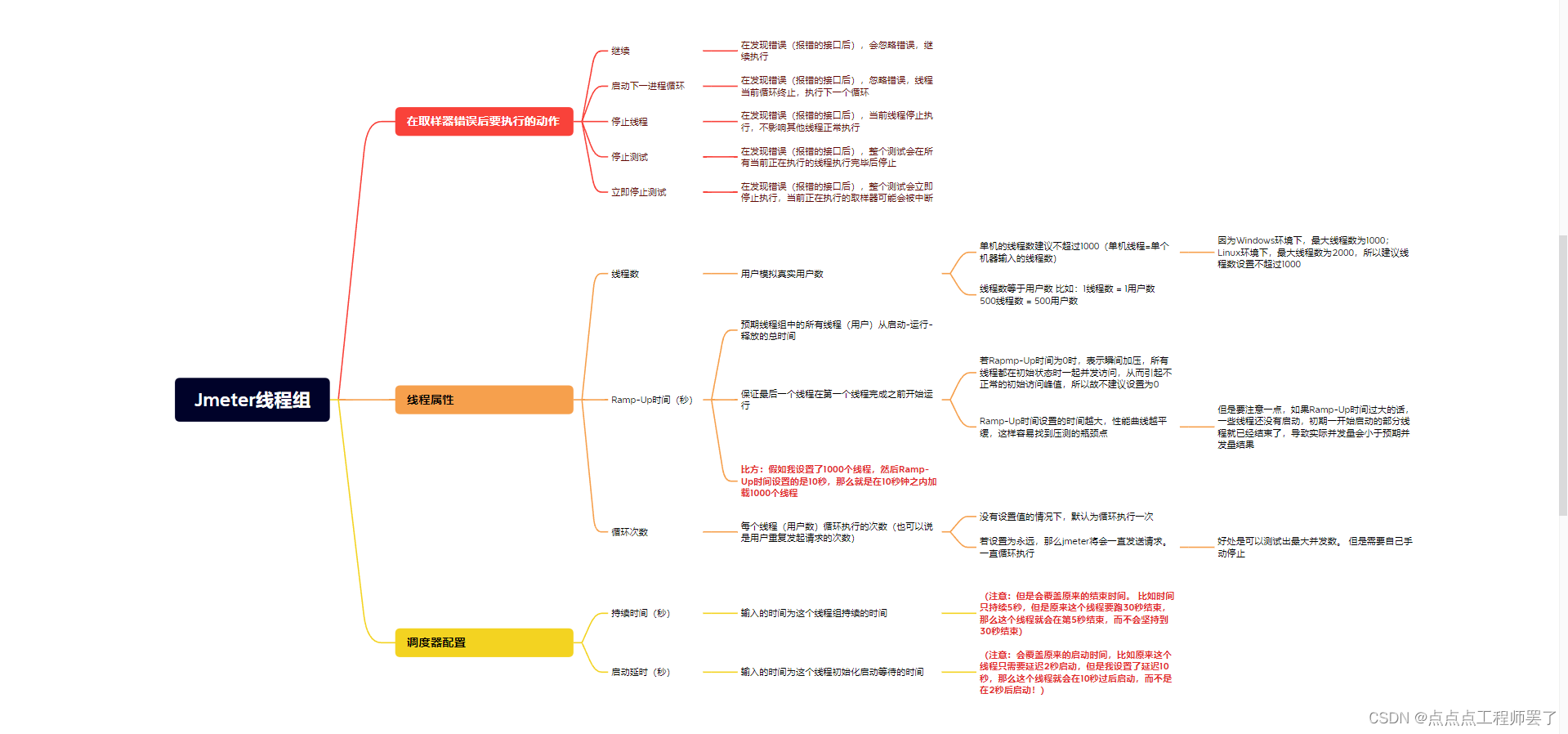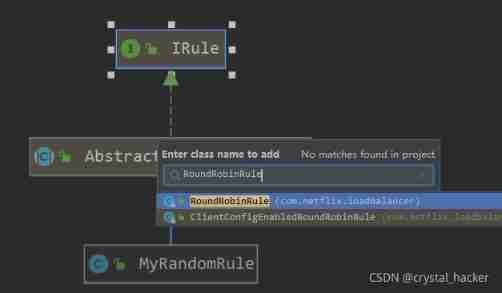当前位置:网站首页>[combinatorics] summary of combinatorial identities (eleven combinatorial identities | proof methods of combinatorial identities | summation methods)*
[combinatorics] summary of combinatorial identities (eleven combinatorial identities | proof methods of combinatorial identities | summation methods)*
2022-07-03 16:08:00 【Programmer community】
List of articles
- One 、 Eleven combinatorial identities
- Two 、 Combinatorial identity Method of proof
- 3、 ... and 、 Combinatorial number Sum up
∑
\sum
∑ Method
Combinatorial identity reference blog :
- 【 Combinatorial mathematics 】 Binomial theorem and combinatorial identities ( binomial theorem | Three combinatorial identities recursion | recursion 1 | recursion 2 | recursion 3 Pascal / Yang Hui's trigonometric formula | Combination analysis method | Characteristics of recursive combinatorial identities )
- 【 Combinatorial mathematics 】 Combinatorial identity ( Recurrence Combinatorial identity | Change the next term to sum Combinatorial identity Simple and | Change the next term to sum Combinatorial identity Staggered and )
- 【 Combinatorial mathematics 】 Combinatorial identity ( Change the next term to sum 3 Combinatorial identity | Change the next term to sum 4 Combinatorial identity | binomial theorem + Derivation Prove the combinatorial identity | Use known combinatorial identities to prove combinatorial identities )
- 【 Combinatorial mathematics 】 Combinatorial identity ( Review of eight combinatorial identities | Combinatorial identity product 1 | prove | Use scenarios )
- 【 Combinatorial mathematics 】 Combinatorial identity ( Combinatorial identity Sum of product 1 | Sum of product 1 prove | Combinatorial identity Sum of product 2 | Sum of product 2 prove )
One 、 Eleven combinatorial identities
1 . Combinatorial identity ( recursion ) :
( 1 ) recursion 1 :
(
n
k
)
=
(
n
n
−
k
)
\dbinom{n}{k} = \dbinom{n}{n-k}
(kn)=(n−kn)①
( 2 ) recursion 2 :
(
n
k
)
=
n
k
(
n
−
1
k
−
1
)
\dbinom{n}{k} = \dfrac{n}{k} \dbinom{n - 1}{k - 1}
(kn)=kn(k−1n−1)②
( 3 ) recursion 3 ( Pascal / Yang Hui's trigonometric formula ) :
(
n
k
)
=
(
n
−
1
k
)
+
(
n
−
1
k
−
1
)
\dbinom{n}{k} = \dbinom{n - 1}{k} + \dbinom{n - 1}{k - 1}
(kn)=(kn−1)+(k−1n−1)③
2 . Review the combinatorial identities of summation under four variables : The combinatorial identity introduced earlier The number of combinations in
(
n
k
)
\dbinom{n}{k}
(kn) , Is the next item
k
k
k Have been accumulating changes , have
∑
k
=
0
n
\sum\limits_{k=0}^{n}
k=0∑n Cumulative property , Previous item
n
n
n It is the same. ;
( 1 ) Simple and :
∑
k
=
0
n
(
n
k
)
=
2
n
\sum\limits_{k=0}^{n}\dbinom{n}{k} = 2^n
k=0∑n(kn)=2n④
( 2 ) Staggered and :
∑
k
=
0
n
(
−
1
)
k
(
n
k
)
=
0
\sum\limits_{k=0}^{n} (-1)^k \dbinom{n}{k} = 0
k=0∑n(−1)k(kn)=0⑤
( 3 ) Change the next term to sum 3 :
∑
k
=
0
n
k
(
n
k
)
=
n
2
n
−
1
\sum\limits_{k=0}^{n} k \dbinom{n}{k} = n 2^{n-1}
k=0∑nk(kn)=n2n−1⑥
( 4 ) Change the next term to sum 4 :
∑
k
=
0
n
k
2
(
n
k
)
=
n
(
n
+
1
)
2
n
−
2
\sum_{k=0}^{n} k^2 \dbinom{n}{k} = n ( n+1 ) 2^{n-2}
∑k=0nk2(kn)=n(n+1)2n−2⑦
3 . Change the upper term to sum :
∑
l
=
0
n
(
l
k
)
=
(
n
+
1
k
+
1
)
\sum\limits_{l=0}^{n} \dbinom{l}{k} = \dbinom{n + 1}{k + 1}
l=0∑n(kl)=(k+1n+1)⑧
4 . product :
∑
l
=
0
n
(
l
k
)
=
(
n
+
1
k
+
1
)
\sum\limits_{l=0}^{n} \dbinom{l}{k} = \dbinom{n + 1}{k + 1}
l=0∑n(kl)=(k+1n+1)⑨
5 . Sum of product :
( 1 ) Combinatorial identity ( Sum of product ) 1 :
∑
k
=
0
r
(
m
k
)
(
n
r
−
k
)
=
(
m
+
n
r
)
,
r
=
min
{
m
,
n
}
\sum\limits_{k=0}^{r}\dbinom{m}{k}\dbinom{n}{r-k} = \dbinom{m + n }{r} , \ \ \ \ \ \ r= \min \{ m, n \}
k=0∑r(km)(r−kn)=(rm+n), r=min{ m,n}⑩
( 2 ) Combinatorial identity ( Sum of product ) 2 :
∑
k
=
0
r
(
m
k
)
(
n
k
)
=
(
m
+
n
m
)
\sum\limits_{k=0}^{r}\dbinom{m}{k}\dbinom{n}{k} = \dbinom{m + n }{m}
k=0∑r(km)(kn)=(mm+n)⑪
Two 、 Combinatorial identity Method of proof
1 . Known combinatorial identities are substituted into : Known
11
11
11 A combinatorial identity is substituted into
2 . binomial theorem
n
n
n It's a positive integer. , For everything
x
x
x and
y
y
y , There are the following theorems :
(
x
+
y
)
n
=
∑
k
=
0
n
(
n
k
)
x
k
y
n
−
k
(x + y)^n = \sum_{k=0}^n \dbinom{n}{k}x^k y^{n-k}
(x+y)n=k=0∑n(kn)xkyn−k
(
n
k
)
\dbinom{n}{k}
(kn) Express
n
n
n Yuan centralized retrieval
k
k
k Number of combinations of elements , yes Number of sets
C
(
n
,
k
)
C(n,k)
C(n,k) Another way of writing ;
Another common form (
y
=
1
y = 1
y=1 ) :
(
1
+
x
)
n
=
∑
k
=
0
n
(
n
k
)
x
k
(1 + x)^n = \sum_{k=0}^n \dbinom{n}{k}x^k
(1+x)n=k=0∑n(kn)xk
Basic summation formula (
x
=
y
=
1
x = y =1
x=y=1 ) :
2
n
=
∑
k
=
0
n
(
n
k
)
2^n = \sum_{k=0}^n \dbinom{n}{k}
2n=k=0∑n(kn)
3 . Derivation of power series 、 integral
Derivation of power function : ( Very important )
- Primitive function :
y
=
x
n
y = x^n
y=xn
- Corresponding derivative :
y
′
=
n
x
n
−
1
y' = nx^{n-1}
y′=nxn−1
The derivative of a constant is
0
0
0 ;
Four operations of derivative :
(
u
±
v
)
′
=
u
′
±
v
′
(u \pm v)' = u' \pm v'
(u±v)′=u′±v′
Reference resources :
- derivative - Baidu Encyclopedia
- Combinatorial identity ( Change the next term to sum ) Sum of variable coefficients 1 prove ( binomial theorem + Derivation )
4 . Induction
Mathematical induction describe A proposition related to natural numbers
P
(
n
)
P(n)
P(n) ,
According to different questions , Set up
n
n
n The minimum value , Usually from
0
0
0 Start ,
( 1 ) The proof is divided into the following two steps :
① Inductive basis : First prove that Inductive basis , If it is proved that
P
(
0
)
P(0)
P(0) It's true ;
② Induction steps : according to Types of mathematical induction , Prove in different ways , Here you are First, mathematical induction and Second, mathematical induction Two kinds of induction ;
( 1 ) Mathematical induction :
① First, mathematical induction : from
P
(
n
)
P(n)
P(n) deduction
P
(
n
+
1
)
P(n + 1)
P(n+1)
P
(
0
)
P(0)
P(0) It's true
hypothesis
P
(
n
)
P(n)
P(n) It's true , prove
P
(
n
+
1
)
P(n + 1)
P(n+1) It's true
② Second, mathematical induction : All less than
n
n
n Of
P
(
0
)
,
P
(
1
)
,
⋯
,
P
(
n
−
1
)
P(0) , P(1), \cdots , P(n-1)
P(0),P(1),⋯,P(n−1) It's all true , deduction
P
(
n
)
P(n)
P(n) It's true ;
P
(
0
)
P(0)
P(0) It's true
Assume that all are less than
n
n
n The natural number of
k
k
k , proposition
P
(
k
)
P(k)
P(k) It's all true , namely
P
(
0
)
,
P
(
1
)
,
⋯
,
P
(
n
−
1
)
P(0) , P(1), \cdots , P(n-1)
P(0),P(1),⋯,P(n−1) It's all true , deduction
P
(
n
)
P(n)
P(n) It's true ;
Symbolized as :
P
(
0
)
∧
P
(
1
)
∧
⋯
∧
P
(
n
−
1
)
→
P
(
n
)
P(0) \land P(1) \land \cdots \land P(n-1) \to P(n)
P(0)∧P(1)∧⋯∧P(n−1)→P(n)
Reference resources : 【 Combinatorial mathematics 】 Introduction to combinatorics ( Combination thought 2 : Mathematical induction | Generalization of mathematical induction | Multiple inductive thoughts )
5 . Combinatorial analysis
When using the combination analysis method to prove the combination number , Specify the set first , Specify elements , Specify two counting problems , On both sides of the formula are the counts of the same problem ;
( 1 ) Specify the collection : Specify the set in which the count is generated ;
( 2 ) Specify the counting problem : The following two counting problems are the counting of the same problem ;
- ① problem 1 : The left side of the equal sign represents the counting problem ;
- ② problem 2 : The right side of the equal sign represents the counting problem ;
( 3 ) Equivalent description : It shows that the two counting problems are the same ;
Reference resources :
- 【 Combinatorial mathematics 】 Combinatorial identity ( Combinatorial identity Sum of product 1 | Sum of product 1 prove | Combinatorial identity Sum of product 2 | Sum of product 2 prove ) Two 、 Combinatorial identity ( Sum of product ) 1 prove
The above proof method , According to specific certification requirements , Choose the appropriate proof method ;
3、 ... and 、 Combinatorial number Sum up ∑
\sum
∑ Method
For formulas containing combinatorial numbers Sum up
∑
\sum
∑ Method
1 . Use Pascal formula :
recursion 3 ( Pascal / Yang Hui's trigonometric formula ) :
(
n
k
)
=
(
n
−
1
k
)
+
(
n
−
1
k
−
1
)
\dbinom{n}{k} = \dbinom{n - 1}{k} + \dbinom{n - 1}{k - 1}
(kn)=(kn−1)+(k−1n−1)③
( 1 ) Merge item :
(
n
k
)
\dbinom{n}{k}
(kn) Can be reduced to
(
n
−
1
k
)
+
(
n
−
1
k
−
1
)
\dbinom{n - 1}{k} + \dbinom{n - 1}{k - 1}
(kn−1)+(k−1n−1) The sum of the ;
( 2 ) This recursion , Used to split items :
Can be
(
n
k
)
\dbinom{n}{k}
(kn) Split into
(
n
−
1
k
)
+
(
n
−
1
k
−
1
)
\dbinom{n - 1}{k} + \dbinom{n - 1}{k - 1}
(kn−1)+(k−1n−1) The sum of the ; In actual use , Often encounter some items listed , Yes
(
n
−
1
k
)
+
(
n
−
1
k
−
1
)
\dbinom{n - 1}{k} + \dbinom{n - 1}{k - 1}
(kn−1)+(k−1n−1) The number of combinations of forms , Can be merged into one
(
n
k
)
\dbinom{n}{k}
(kn) ;
( 3 ) It can also be used by deformation , Put one of them , Become the difference between two of them ;
take
(
n
−
1
k
)
\dbinom{n - 1}{k}
(kn−1) Split into
(
n
k
)
−
(
n
−
1
k
−
1
)
\dbinom{n}{k} -\dbinom{n - 1}{k - 1}
(kn)−(k−1n−1) The difference between the ;
take take
(
n
−
1
k
−
1
)
\dbinom{n - 1}{k - 1}
(k−1n−1) Split into
(
n
k
)
−
(
n
−
1
k
)
\dbinom{n}{k} -\dbinom{n - 1}{k}
(kn)−(kn−1) The difference between the ;
In a stack of summation combinatorial numbers , Split into the difference between two numbers , Can offset many combinations ;
It is often used for simplification in large sum formulas ;
2 . Sum of series :
3 . Observations and results , Prove by mathematical induction :
Guess the result of a sum , Then use induction to prove ;
4 . Use the known formula to sum :
边栏推荐
- [list to map] collectors Tomap syntax sharing (case practice)
- 面试官:JVM如何分配和回收堆外内存
- Advanced Mathematics (Seventh Edition) Tongji University exercises 2-1 personal solutions
- Go语言自学系列 | golang中的if else if语句
- C language brush questions ~leetcode and simple questions of niuke.com
- Is it safe to open an account with tongdaxin?
- App mobile terminal test [3] ADB command
- Intelij idea efficient skills (III)
- App mobile terminal test [4] APK operation
- Unity function - unity offline document download and use
猜你喜欢

Jmeter线程组功能介绍

面试官:JVM如何分配和回收堆外内存
![[proteus simulation] 8 × 8LED dot matrix screen imitates elevator digital scrolling display](/img/46/c7f566f8fd46d383b055582d680bb7.png)
[proteus simulation] 8 × 8LED dot matrix screen imitates elevator digital scrolling display

Microservice API gateway

App移动端测试【4】apk的操纵
![[list to map] collectors Tomap syntax sharing (case practice)](/img/ac/e02deb1cb237806d357a88fb812852.jpg)
[list to map] collectors Tomap syntax sharing (case practice)

From the 18th line to the first line, the new story of the network security industry

Q2 encryption market investment and financing report in 2022: gamefi becomes an investment keyword

Intelij idea efficient skills (III)

QT use qzxing to generate QR code
随机推荐
用通达信炒股开户安全吗?
Reflection on some things
MongoDB 的安装和基本操作
请求头不同国家和语言的表示
The accept attribute of the El upload upload component restricts the file type (detailed explanation of the case)
How to use AAB to APK and APK to AAB of Google play apps on the shelves
用同花顺炒股开户安全吗?
Qt插件之自定义插件构建和使用
深度学习之三维重建
Go language self-study series | if else if statement in golang
Download and install common programs using AUR
"Everyday Mathematics" serial 56: February 25
Approval process design
面试官:JVM如何分配和回收堆外内存
Create gradle project
App移动端测试【4】apk的操纵
Record a jar package conflict resolution process
Detailed explanation of string function and string function with unlimited length
Distributed task scheduling XXL job
Microservice API gateway zuul